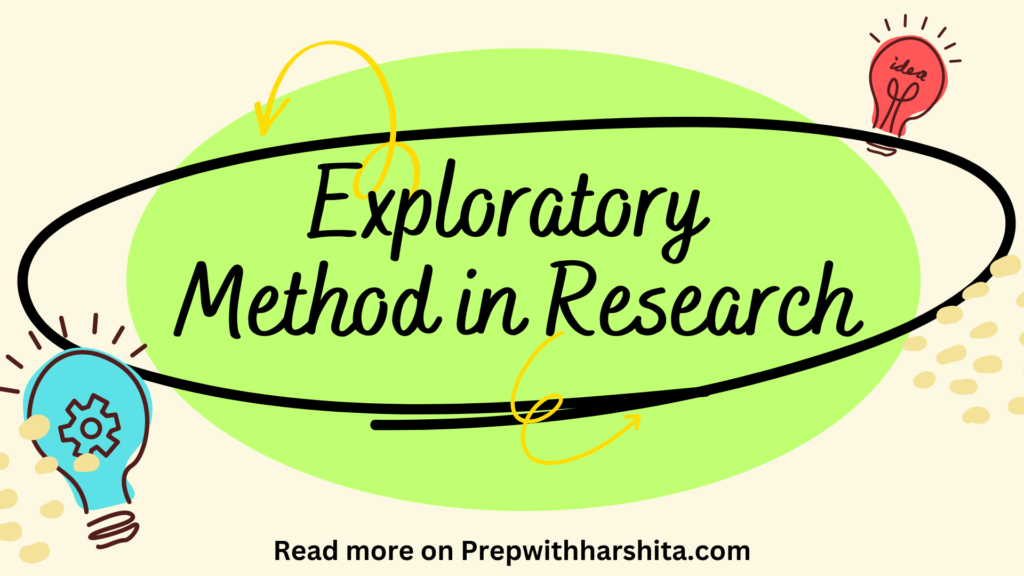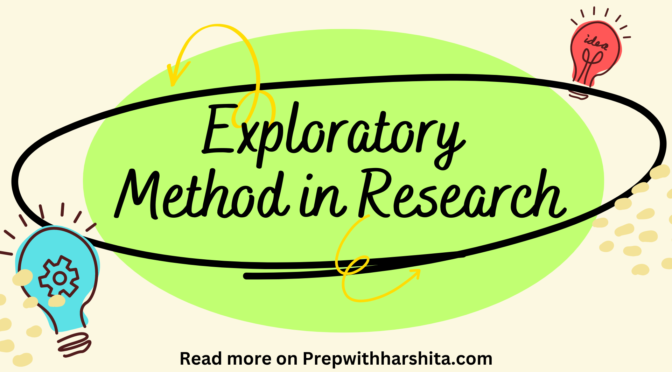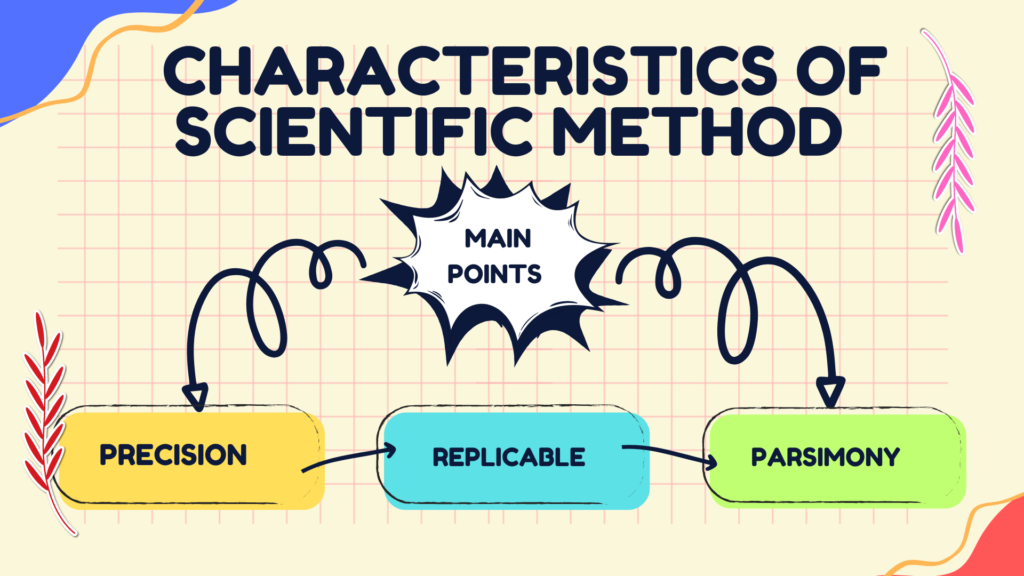Exploratory research is a type of research method used to investigate a phenomenon or problem in an initial or preliminary way, with the goal of generating insights and developing hypotheses for further investigation.
- It is often used when little is known about a particular topic or when the research question is broad and undefined.
- Exploratory research typically involves a combination of qualitative and quantitative methods, such as interviews, focus groups, surveys, case studies, and observational research. Data collected through these methods are often analyzed using qualitative techniques such as content analysis, thematic analysis, or grounded theory.
- One key feature of exploratory research is that it is flexible and adaptable to new information as it arises. The research process is iterative, with researchers continuously revising their research questions and methods based on emerging data and insights.
- Exploratory research can have several goals. For example, it can help researchers identify potential variables or factors that may be influencing a phenomenon, or it can help researchers develop hypotheses or theories that can be tested in later studies. It can also help researchers identify gaps in the existing literature or suggest new areas of inquiry.
- Exploratory research is particularly useful in the early stages of research when the topic is still being defined and the research questions are still being refined. By generating preliminary data and insights, exploratory research can help guide the development of more focused and rigorous research studies in the future.
Exploratory research is a type of research method that is characterized by several key features:
- Flexibility: One of the key features of exploratory research is its flexibility. Researchers using this approach are able to adjust their research questions and methods based on emerging data and insights. This enables them to more effectively explore a phenomenon and develop new hypotheses or theories.
- Qualitative and quantitative methods: Exploratory research typically uses a combination of qualitative and quantitative methods to collect data. These may include interviews, focus groups, surveys, case studies, and observational research.
- Open-ended questions: Exploratory research often involves open-ended questions, which allow participants to provide detailed and nuanced responses. This can help researchers gain a more complete understanding of a phenomenon and identify potential areas for further investigation.
- Iterative process: Exploratory research is often an iterative process, with researchers collecting data, analyzing it, and then refining their research questions and methods based on their findings. This process may continue until the researcher feels that they have gained a sufficient understanding of the phenomenon they are studying.
- Non-representative sampling: Because exploratory research is often used to investigate phenomena that are not well understood, researchers may use non-representative sampling methods to select participants. This allows them to gain insights from individuals who may have unique perspectives or experiences related to the phenomenon being studied.
- Emergent design: In exploratory research, the research design often emerges during the research process, rather than being predetermined. This allows researchers to adapt to new information and insights as they arise, and to develop new research questions and methods based on their findings.
These features of exploratory research enable researchers to gain a more complete understanding of a phenomenon and to generate new hypotheses or theories that can be tested in future research. While exploratory research is not typically used to test specific hypotheses or establish causality, it can be a valuable tool for generating insights and identifying new areas of inquiry.

Also Read : Prep with Harshita









